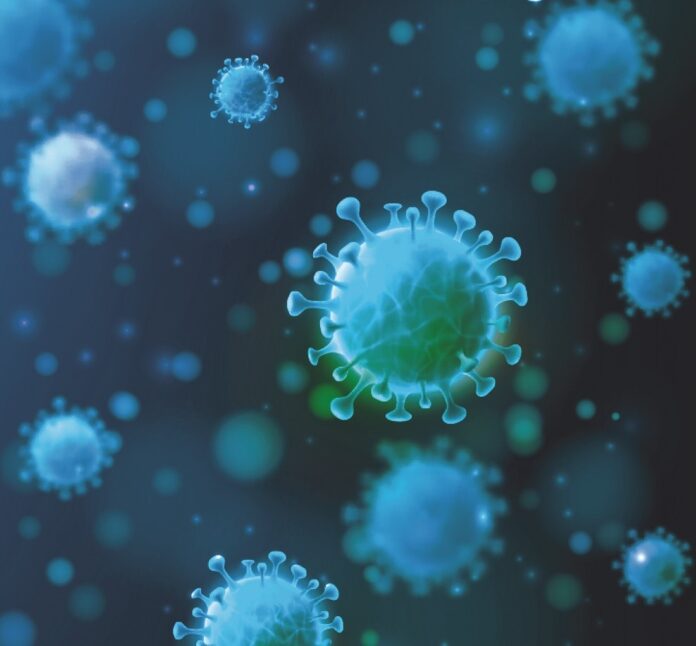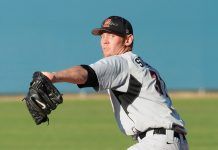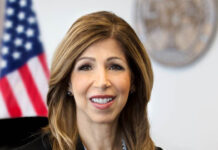California Health & Human Services Agency Secretary Dr. Mark Ghaly hosted a teleconference on Nov. 17 to address the triple threat of viruses people and hospitals are facing heading into the holidays and winter season: the flu, COVID-19, and Respiratory Syncytial Virus.
Ghaly said it has been a while since he spoke about COVID but that was because, in part, what the state has experienced in spring, summer, and early fall has been manageable.
Although the models are not as concerning as they have been in the past, Ghaly said people are dealing with three threats at once.
“The lower to moderate transmission rates that we have enjoyed throughout California have started to shift, and unlike the past two years discussing the COVID and flu collision, this year we are actually starting to see it,” he said. “If that were not enough, the pressure on our youngest Californians, and some of our older Californians, especially in infants and toddlers has worsened earlier than usual,” adding that RSV is usually seen from late January into March.
Ghaly said as a pediatrician and father of four, he hopes to amplify a few messages.
“First, the reality that RSV for most kids will cause an inconvenience of a cold, and if that is all that it was, we would be a lot less concerned,” he said. “For infants and toddlers in particular, RSV can cause a worse experience. For infants developing stronger immune systems and have developing respiratory systems, a little bit of inflammation and irritation in the airway from RSV can cause serious RSV symptoms and even respiratory distress. Children under two are especially vulnerable, and under three, especially premature children, and children with respiratory or cardiac conditions.”
Ghaly said he believes everyone has a part in protecting children. First those who are in contact with young children should wash hands, cover coughs, stay away if they are sick or isolate as much as possible. He said when indoors, if possible, wear a mask, especially because toddlers cannot wear a mask or wear it well enough.
Second, Ghaly said he wanted to talk about the upcoming holidays and that it is still important to do what you can to stop the spread of respiratory viruses.
“Test for COVID before getting together, get your flu and COVID vaccines, continue to do as much as you can outside, ensuring people gathering are not sick, and if travelling long distances, wear a well-fitted, high filtration mask,” he said.
Ghaly said his third issue was vaccines, especially with the confusing messages about vaccines over the past few years.
“Getting the flu shot, COVID vaccines and boosters can really help in preventing severe disease,” he said.
He said there is clear evidence that if you get the vaccines, you could still catch the flu or COVID, but it does reduce the severity of sickness, and gets people back to work and activities much sooner.
Ghaly said in every category tracked—test positivity, case rate numbers, wastewater surveillance, clinical surveillance, hospitalizations—there is an increase in RSV, flu, and COVID. He said RSV positivity rivals numbers seen in previous years and is not sure when it will level out or trend down.
“It is an unusual season where we are seeing high levels of RSV and that is translating into emergency rooms and hospitals that are working at capacity levels,” he said. “They are seeing less beds, especially in special care units in pediatrics and intensive care units across the state. With COVID, over the past one to two weeks we have seen roughly a 25% increase in COVID transmission, in both test positivity and case rates.”
Ghaly said there are also other circulating viruses at play, and on top of the triad of viruses, they all add up, and all the health agencies are partnering to ensure the healthcare services needed are available.
Ghaly said if you are experiencing mild symptoms, call your primary physician or nurses’ hotline, or plan a virtual visit before heading to the emergency room. Ghaly said if you have flu or COVID and are vulnerable to severe disease, there are treatments available and talk to your provider if they relevant for treatment. He said the sooner treatment is started after symptoms occur, the better they work, ideally in the first day or so after having symptoms.
“They both shorten the course of how long you are going to be sick, and they can certainly make your course less severe,” he said, adding for RSV there are no medications to treat it, but there are effective supportive care measures. “If you are experiencing severe disease and especially respiratory distress, getting emergency medical care quickly is critical,” he said.
Ghaly said physicians across the state are stating the same five important things to consider: Stay home if you are sick. Wear a mask, especially in public indoor settings. Get vaccinated for both COVID and flu. Cover your cough and wash your hands.
When asked about future funding for COVID vaccines on the federal level, and the predictions of the out-of-pocket costs for vaccines, Ghaly said at this moment there is no worry over a lack of vaccines in the state.
“At the moment, there should be no problem for any Californian who wants to get a vaccine, whether it is COVID or flu,” he said. “Immediately, we know we have capacity, we know we have supply. California is closely watching what is happening at the federal levels of support. We are hopeful Congress will provide additional resources to keep our ability to protect Californians,” adding that the state legislatures have passed bills to ensure that California can provide vaccines and other supplies to continue to fight COVID for all ages.
Ghaly said he is not surprised to see that hospitals are using alternative methods in dealing with respiratory illnesses, whether it is utilizing outside tents, or alternative indoor areas to help create triage spaces and treatment spaces to meet the need of their communities.
“We continue to provide from the state some flexibilities that have been critical over the past couple of years and they still apply today to allow facilities to do that,” he said. “We are working closely with those facilities to make sure when it is done, it is done in a thoughtful, high-quality way. I am sure San Diego is not the only place. I have seen other counties in southern California, and I would not be surprised to see it in other parts of the state.”














